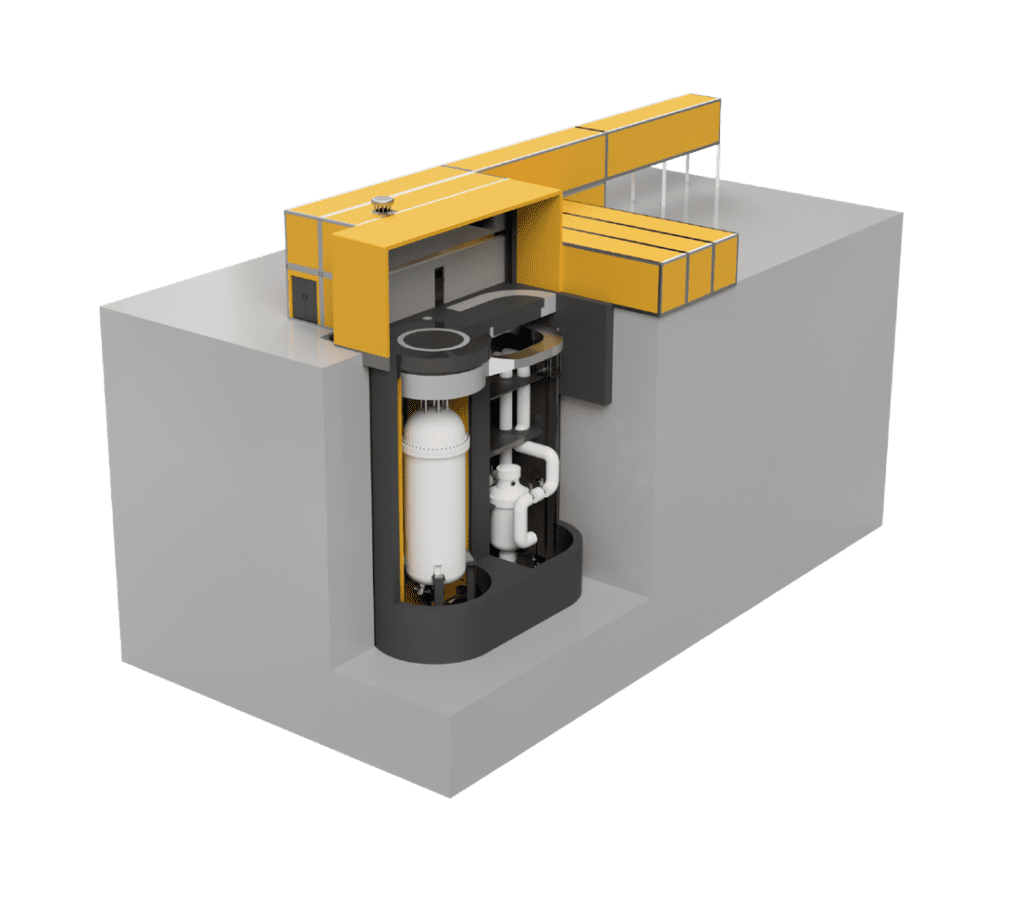Global First Power (GFP), Ultra Safe Nuclear Corporation (USNC) and Ontario Power Generation (OPG) recently announced that they had formed a joint venture called Global First Power Limited Partnership. That venture will build, own and operate an installation called the Micro Modular Reactor (MMR™) at the Chalk River Laboratories site.

Mark Mitchell and Eric MGoey joined as guests on Atomic Show #278 to provide depth and background information about the technology and the project that was not included in the press release.
Mark is USNC’s director for the MMR project. Eric wears two hats, one at GFP and one at OPG. For GFP, he is the director of outreach and communications. For OPG, he is the director of remote power generation.
We talked about the project’s genesis and the joint venture’s mission of proving through doing that the system design can be licensed, manufactured, assembled and operated in a cost-competitive way.
Eric provided a brief overview about OPG. He explained that it that it is committed to providing clean, reliable power both to grid-connected customers and to customers in areas that are not connected to the grid. He described how OPG has a current charter to serve markets throughout Canada and into the United States, and how it hopes that the MMR project will open new markets to the company.
For this first of a kind project, the MMR is a 15 MWth, 5 MWe power system with essentially two main plants. The nuclear plant is a helium-cooled, fission reactor-heated system that circulates helium through a heat exchanger. The adjacent plant is a conventional steam plant that circulates water through a heat exchanger/boiler and a steam turbine/condenser.
Between the two plants is a molten salt heat storage system that acts to buffer heat supply and steam demand. It gets heated by helium that has passed through the reactor. Hot molten salt transfers heat to boil water, creating high pressure steam to turn the turbine.
This arrangement allows the supplied grid to rapidly respond to load changes while enabling operators and control systems to vary reactor power output in a more gradual and efficient manner.
The reactor heat source differs from other high temperature gas reactors. It uses the same Triso coated particle fuel often chosen for gas cooled reactors and some molten salt cooled systems. Instead of using a random graphite matrix material to produce fuel elements from Triso particles the MMR uses USNC’s patented Fully Ceramic Microencapsulated (FCM) fuel.
That innovation replaces random graphite with densely packed silicon carbide (SiC) as the matrix used to produce fuel elements. According to corporate literature on this feature, FCM fuels can retain fission products without failures at temperatures approaching 2000 C.
MMRs are designed to operate for 20 years between fuel system replacements.
While we talked a bit about the technological specifics, most of my conversation with Mark and Eric revolved around business considerations, importance of developing manufacturing competence, the importance of effective cost controls and the importance of transparent engagement with regulators and potential customers.
Your participation in the comment thread is always welcome. If questions arise that need more details, I will seek assistance from the show guests.
I hope you enjoy listening.














